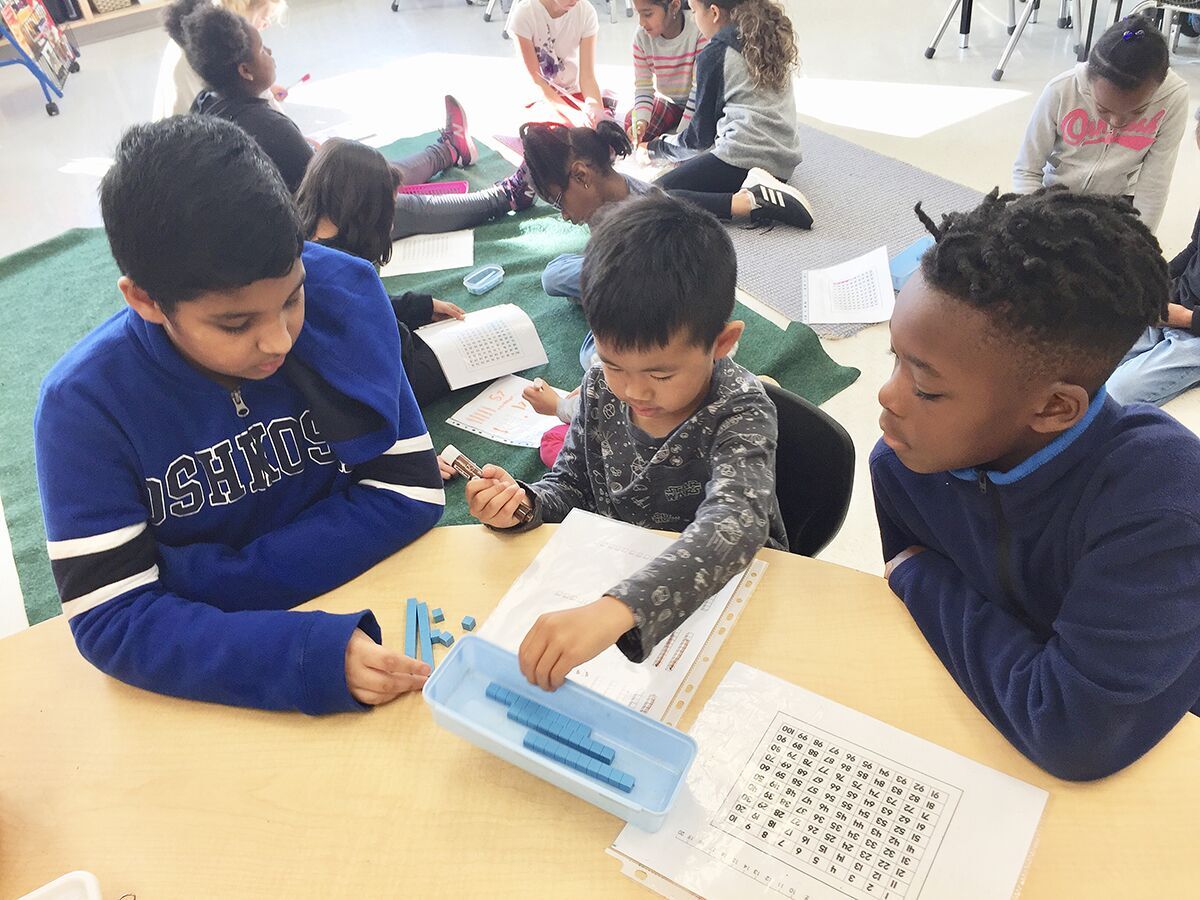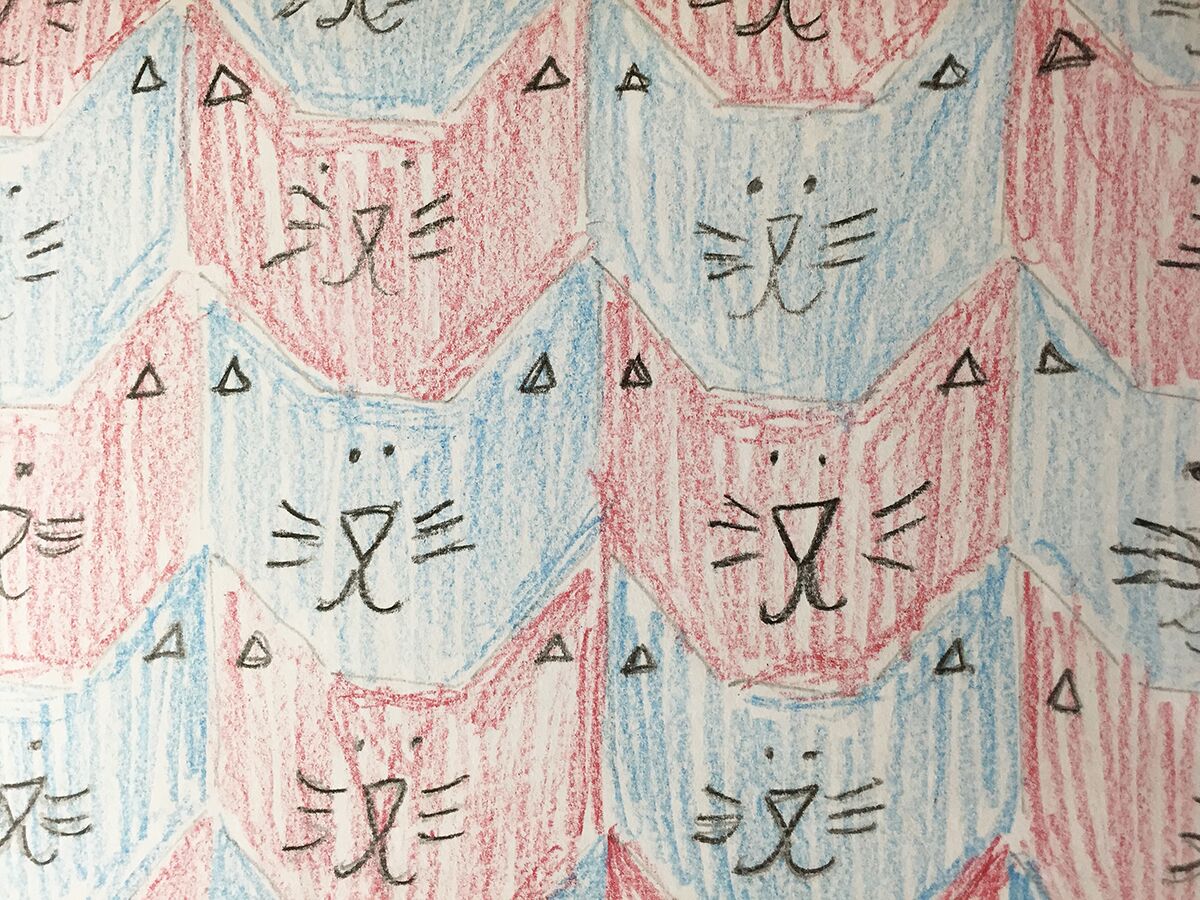My Grade 1 students love meeting up with their Grade 4 reading buddies to share their favourite books. During one buddy meet-up last year, I heard a fourth grader explaining the difference between a triangle and square as he and his Grade 1 buddy were reading a book about shapes. Their conversation made me start thinking outside the box in terms of activities I usually reserve for literacy. I realized that math could be incorporated into many of those tasks. So from Math Buddies to Math Corners, Morning Math to Math Clubs, I began broadening the scope of math in my programming. Here’s what it looks like in practice.
 Math Buddies
Math Buddies
I set up Math Buddies just like Reading Buddies, with each of my first grade students paired with a fourth grader. Activities varied from exploring math vocabulary, to games, to inquiry activities.
Math Buddies has many benefits, one of which is providing an authentic way to apply success criteria. During a graphing unit, my Grade 1s had the task of showing their buddy how to use their success criteria. If a first grader had made a mistake, the Grade 4s would use the success checklist to help their partner improve the graph. In that way, the activity had an added benefit for those Grade 4 students struggling in math. As the “teachers,” these fourth graders had the opportunity to build their confidence.
For those students who feel dread at the mention of “math,” Math Buddies has another benefit. Since many of our activities involve games, math becomes fun again. Our games vary from “Go Fish 10s” to “Coin Battle Royale” to “Hide and Seek Structures.” During Math Buddies, we see smiles, not math anxiety.
Math Buddies also gives the younger students opportunities to extend their learning. In a measurement unit, I wanted my class to calculate the length of various parts of the school. It would have been very difficult for them to use metre sticks on their own, but with their partners, the first graders were able to manipulate the rulers effectively so that there was no overlapping (and no metre stick misuse!) They were also able to keep an accurate count with tally marks. For the older students, it was an effective way to review the rules of measurement and to problem solve because they had to find an efficient way to keep track of their calculations.
Reading Corners to Math Corners
My students love our reading corner. It has a constant supply of their favourite books and collections of their own writing projects. When students have extra time, they know that’s the place to go. At one point, a student asked if she could play a math game in the reading corner which made me realize what a great idea a “math corner” would be.
I set it up across from the reading corner. Cubbies are labelled with the different math games. Some, like the game of “9s”, are independent and others, like “Go Fish 10s”, are partner games. There are also geoboards, snap cubes, tangrams, scales, and addition puzzles.
The Math Corner has helped make math manipulatives more accessible. Previously, I had the tendency of limiting use of resources to their specific Math units. Now students have an opportunity to re-visit concepts by having access to the manipulatives on a daily basis.
Morning Math
My class’s morning routine comprises two activities. Coming in, students have a discussion question on the board like: Do you prefer winter or summer? After announcements, we go to the carpet, they share their thoughts with peers and one student presents his/her ideas to the class. Afterwards, I read a book related to the topic.
I began including math-themed questions into the mix like: Do you prefer circles or squares? Do you prefer addition or subtraction? and What strategies could you use to calculate the number of dots on the ten frame? Which strategy do you prefer?
We followed the same routine as before, with a “think-pair-share,” one student presenting his/her thoughts and then a read-aloud on the topic.
It can be difficult to find books with specific math themes, but kits like Maths et mots or Mathologie make it much easier. Some units in The Guide to Effective Math also have suggestions of books related to specific topics.
The morning math questions ensured I was giving students routine opportunities to improve their math communication skills. I saw an improvement in their ability to use math vocabulary, to apply mental math skills, and to think creatively about math.
Their answers are often really impressive. With the question of Do you prefer addition or subtraction? one student said, Aren’t they kind of the same? When I asked her to elaborate, she gave an example of an inverse operation! For students who excel in math, the daily questions give them a chance to shine.
Math Clubs
If students are interested in sports, their extra-curricular options are vast. The same goes for those interested in the arts with clubs including dance, choir, band, drama and photography. A student who loves math is usually limited to a chess or coding club.
A Sports Stats Club would be a great addition to math extra-curricular activities. Students could learn about people like Oakland A’s manager Billy Beane who used statistics to build a playoff team with very limited funds. Kyle Dubas, the youngest general manager in NHL history, would also be an interesting case study. He created an analytics team for the Maple Leafs that includes a mathematician and an engineer.

Tessellation art inspired by animals.
Students in the Sport Stats Club could attend school games, taking stats on wins, losses, goals, assists, etc. and then break down the data to share trends with the team coach. And just like students in dance club or track and field get special opportunities to participate in community events, the Sport Stats Club could have an outing like attending a Blue Jays game, where templates are available to record stats in real-time. Sites like ScienceNetLinks.com also have extension activities.
Other math extra-curriculars can range from Board Game Club to Math and Crafts Club, which I have run for Grade 2 students. For our first project, students made tessellation art by tracing shapes and decorating those shapes as animals. We then made origami animals, a great way to develop spatial reasoning skills. We also created “The City of Pi” by graphing the decimals of Pi to make a cityscape.
Next Steps
A few years ago, I invited a student’s mom to talk about how she uses math as a mortgage broker. My goal next year is to have guest speakers like this more often. I would love to see other schools doing the same. I would also love to see the creation of Mathematicians in the School as a corollary of Scientists in the School. With special events, clubs, and activities like Math Buddies, we can help students develop their basic competencies at the same time as creating an environment where math is exciting and fun.
ABOUT THE AUTHOR
Christina Heyding
Christina Heyding, B.Ed. (OISE), B.A. (McGill), GrDip Journalism (Concordia), is a Grade 1 French Immersion Teacher with the Durham District School Board in Ontario. She has written for publications like The Toronto Star and recently published her first children’s book The Misfits of Christmas (Les décorations au coeur brisé).
This article is from Canadian Teacher Magazine’s Winter 2020 issue.









